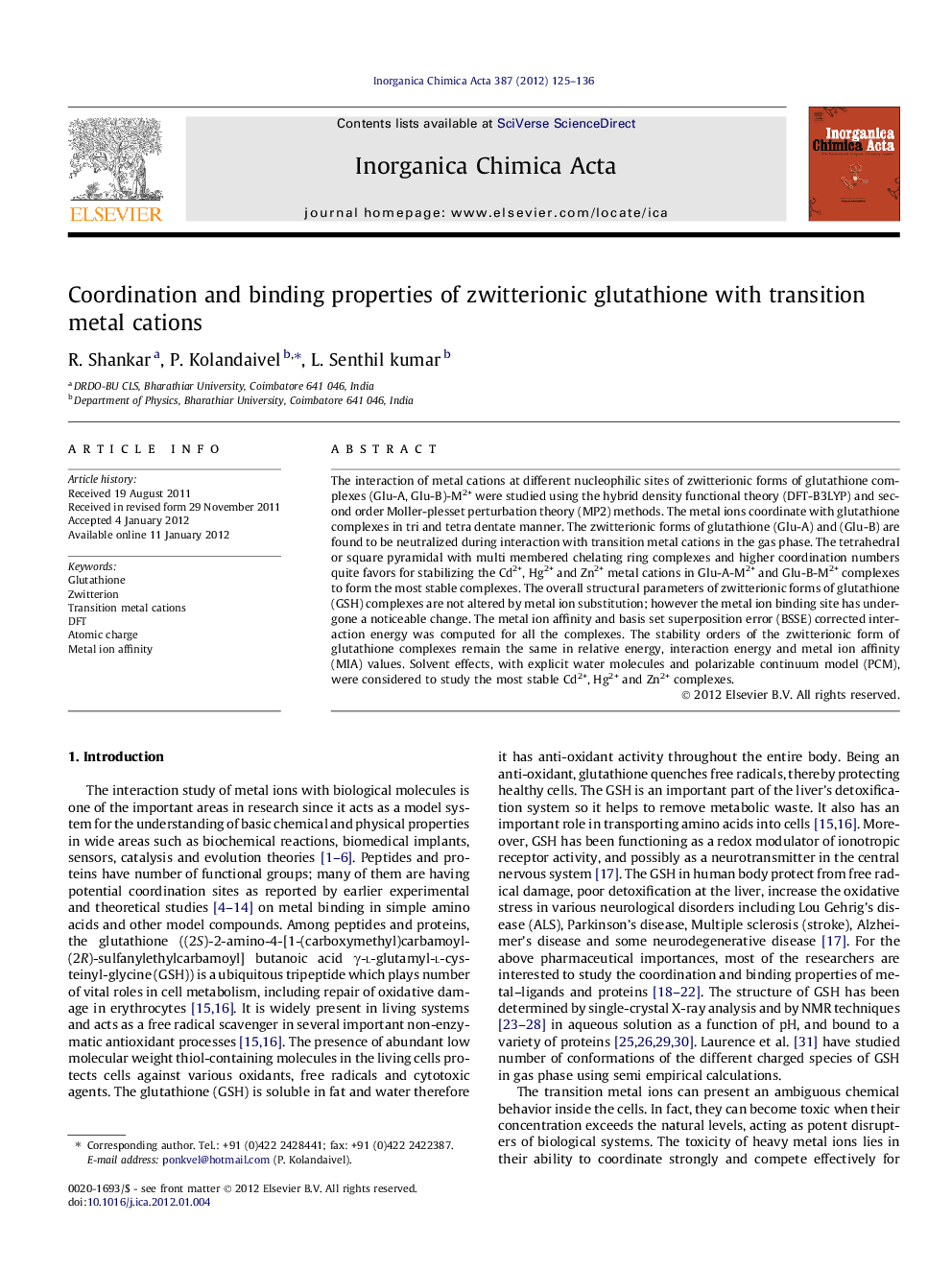| Article ID | Journal | Published Year | Pages | File Type |
|---|---|---|---|---|
| 1310886 | Inorganica Chimica Acta | 2012 | 12 Pages |
The interaction of metal cations at different nucleophilic sites of zwitterionic forms of glutathione complexes (Glu-A, Glu-B)-M2+ were studied using the hybrid density functional theory (DFT-B3LYP) and second order Moller-plesset perturbation theory (MP2) methods. The metal ions coordinate with glutathione complexes in tri and tetra dentate manner. The zwitterionic forms of glutathione (Glu-A) and (Glu-B) are found to be neutralized during interaction with transition metal cations in the gas phase. The tetrahedral or square pyramidal with multi membered chelating ring complexes and higher coordination numbers quite favors for stabilizing the Cd2+, Hg2+ and Zn2+ metal cations in Glu-A-M2+ and Glu-B-M2+ complexes to form the most stable complexes. The overall structural parameters of zwitterionic forms of glutathione (GSH) complexes are not altered by metal ion substitution; however the metal ion binding site has undergone a noticeable change. The metal ion affinity and basis set superposition error (BSSE) corrected interaction energy was computed for all the complexes. The stability orders of the zwitterionic form of glutathione complexes remain the same in relative energy, interaction energy and metal ion affinity (MIA) values. Solvent effects, with explicit water molecules and polarizable continuum model (PCM), were considered to study the most stable Cd2+, Hg2+ and Zn2+ complexes.
Graphical abstractMetal ions coordinate with glutathione complexes in tri and tetra dentate manner. Zwitterionic forms of glutathione (Glu-A) and (Glu-B) are neutralized. Structural parameters of GSH complexes are not altered by metal ion substitution. Stability orders of GSH complexes remain same in MIA, relative energy, interaction energy..Figure optionsDownload full-size imageDownload as PowerPoint slideHighlights► Zwitterionic forms of Glutathione are found to be neutralized with transition metal cations. ► Complexes were characterized by a covalent interaction between glutathione and a metal ion. ► Tetrahedral or square pyramidal with multi membered chelating ring complexes are found to be more stable. ► Larger electrostatic interactions observed for Zn2+ rather than Cd2+ and Hg2+ complexes. ► Introduction of water ligands, around the metal center usually favors the octahedral coordinations.
